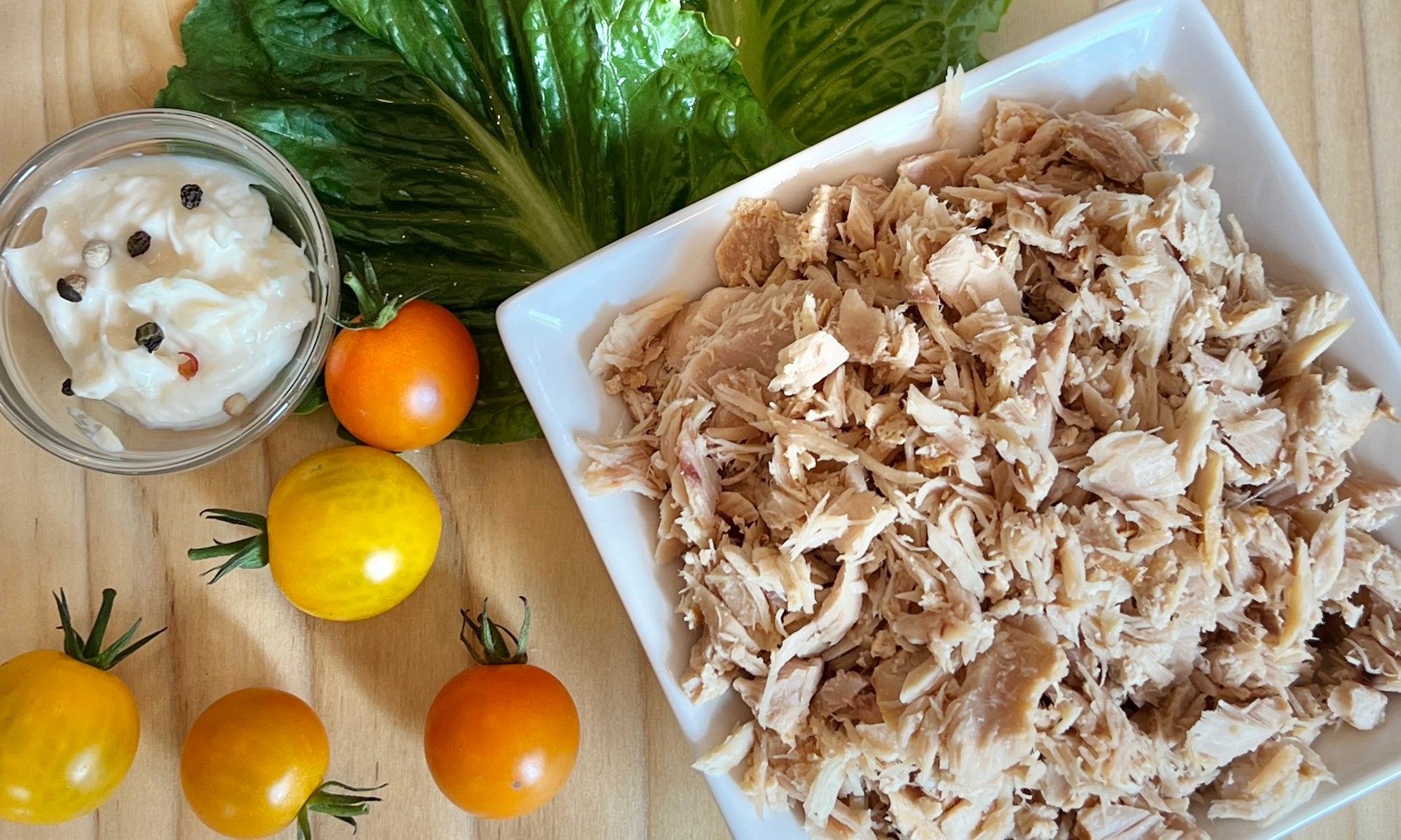You can safely eat fish and shellfish 3+ times per week, every week. Let me explain.
When I was pregnant with my first daughter, Grace, my husband and I went to Tokyo for a work trip. I was about 24 weeks along and at our first hosted dinner, we were taken to an incredible sushi restaurant. When I said that I couldn't have any raw fish the entire table looked at me like I must have been kidding. The Japanese hosts, both men and women, said that if anything you eat more fish and sushi when you are pregnant, because it helps the baby and the pregnancy. They couldn’t understand why I was removing this essential food from my pregnancy diet. I do understand the concern about undercooked or mishandled sushi and food poisoning, that is a legitimate concern. But mercury? It’s misunderstood. I ate sushi at dinner, and through the rest of the trip. Gracie is a healthy, smart and strong girl, I promise!
What is Mercury?
Mercury is a naturally occurring element in the air we breathe, the water we drink and the food we eat. It’s one of the only elements that is liquid in stable conditions and is beautiful with its shiny silver coloring - which is why it's also known as quicksilver. It comes in various forms: elemental (metallic) and inorganic (to which people may be exposed through their occupation); and organic (methylmercury, to which people may be exposed through their diet). These forms of mercury differ in their degree of toxicity and in their effects on the nervous, digestive and immune systems, and on lungs, kidneys, skin and eyes.
The type of mercury that appears in the food we eat, particularly fish, is called methylmercury.
How does Mercury get in fish?
Fish living in the oceans are exposed to mercury through the ocean sediment. Volcanic reactions under the ocean floor release mercury, and even on dry land, nutrient-rich soil full of elements can be found near tectonic plates. Mercury can be released in the atmosphere from things like mining and concrete production. Streams and rivers can also wash mercury into the ocean from the soil. The ocean is constantly performing an incredible air-water exchange and is able to store many elements from our atmosphere.
Once in the ocean, microorganisms like phytoplankton consume and transform the mercury into methylmercury. This is the form that we consume through food. Small fish eat those plankton. Larger fish eat the smaller fish. Huge fish eat the larger fish, and up the chain we go. This accumulation of mercury up the food chain is called “bioaccumulation”. This is why you’ll notice that larger fish that live longer tend to be on the “consume sparingly” lists.
How much Mercury can I safely eat?
Currently, research from the EPA and FDA states humans can safely tolerate an average of 0.7 ug of mercury per kilogram of body weight per week. I know, math. This means that some weeks you’ll have more mercury than others, remember, it's an average.
Lemme make it easier:
100 lbs = 32 ug Mercury per week
130 lbs = 42 ug Mercury per week
150 lbs = 48 ug Mercury per week
160 lbs = 51 ug Mercury per week
170 lbs = 54 ug Mercury per week
180 lbs = 57 ug Mercury per week
190 lbs = 60 ug Mercury per week
200 lbs = 63 ug Mercury per week
210 lbs = 67 ug Mercury per week
220 lbs = 70 ug Mercury per week
230 lbs = 73 ug Mercury per week
*You can do more math if your weight is missing.
As an example… at 160 lbs, I can have 51ug of mercury each week. In my Premier Catch diet, that means I could have a Tuna Sandwich, our 6 oz Sockeye Salmon portion, and an 8oz portion of our Wild Alaskan Cod this week.
If I was on a salmon kick I could have our 8 oz King Salmon for dinner 5 nights a week!
To play the “how much mercury does this have in it” game, here is a very cool calculator to prep your Premier Catch meals.
Our 2 highest sources of mercury are our Canned Albacore and Wild Pacific Halibut. And you can even have those every week and still be under your mercury recommendation. Pssst… see the note on selenium below to get even more bang for your buck.
How does the body get rid of mercury?
Mercury is metabolized through a reaction called “redox” you learned about in school way back when! The oxidation–reduction cycle takes place in our gut microbes and after absorption in many tissues and in the red blood cells. This means that electrons are being exchanged in order to break it down to a form that can then be excreted (mostly out the other side of our intestines into the toilet).
A Major Note about Selenium…
Selenium is another chemical element that works as a nutritional mineral. It is found in very small amounts of food and I would argue that many of us do not get enough selenium in our everyday diets. Selenium happens to be a great binder of mercury. When selenium in the body (or food) is high, mercury cannot be absorbed as well, therefore working to prevent toxicity! Fish are great sources of selenium. A study done on fish in the East China Sea even ventured to say that selenium presence in some fish would totally negate the toxicity risk of mercury altogether.
While fish are an incredible source of selenium, an easy shortcut is Brazil Nuts. Just one brazil nut gives you your entire days worth of selenium. If you are a frequent fish eater (I hope you are!) make sure to put brazil nuts on your shopping list too.
Can I test myself for Mercury?
Yes, but it’s not really helpful for most of us. Methylmercury (organic mercury) accumulates in our bloodstream and urine, and overtime in our hair follicles. The best measurement for recent exposure would be a blood test through your doctor… but they rarely ever order them. A hair test would be a better long term indicator. Red blood cells turn over about every 30 days, so a blood test would be an accurate snapshot looking about the past month of dietary intake. The only reason you would do this would be if you had a drastic increase in consuming foods like mackerel, swordfish, tilefish or bigeye tuna specifically; or if you are having symptoms of heavy metal toxicity, such as unexplained and chronic nausea and vomiting, diarrhea, stomach pain, brain fog and fatigue.
At home mercury test kits don’t really apply here. They mainly test for elemental mercury (inorganic and metallic) which would come from toxic exposure via workplace heavy metals. If you do test for mercury, remember that mercury from the diet is methylmercury (organic mercury) and many tests will report on other forms (elemental, inorganic) as well - which would not have come from food. Be sure to read carefully.
In conclusion - please eat seafood every week! The benefits of protein, omega-3s, and trace minerals far outweigh any risk associated with the mercury content!
Key Facts:
- The type of mercury matters. We get a specific type called methylmercury from eating fish.
- Ethylmercury is a different type of mercury that can be found in small amounts in vaccines - this type of mercury is very different and does not accumulate in the body and is very safe.
- Half of the mercury produced in the atmosphere comes from us humans. Reducing how much mercury we put into the atmosphere will significantly reduce the amount that makes it into fish and our food supply.
- Humans contribute to mercury in the atmosphere by burning fossil fuels like coal, mining for things like gold, and concrete production. By far, burning coal is our greatest contributor.
- Our bodies can handle and metabolize mercury! There is plenty of room for seafood in your diet every single week.
- Eating selenium rich foods helps to bind mercury and prevent some absorption. Add in brazil nuts, other animal proteins, cottage cheese, brown rice and eggs to your diet. Seafood is also a very rich source of selenium!


